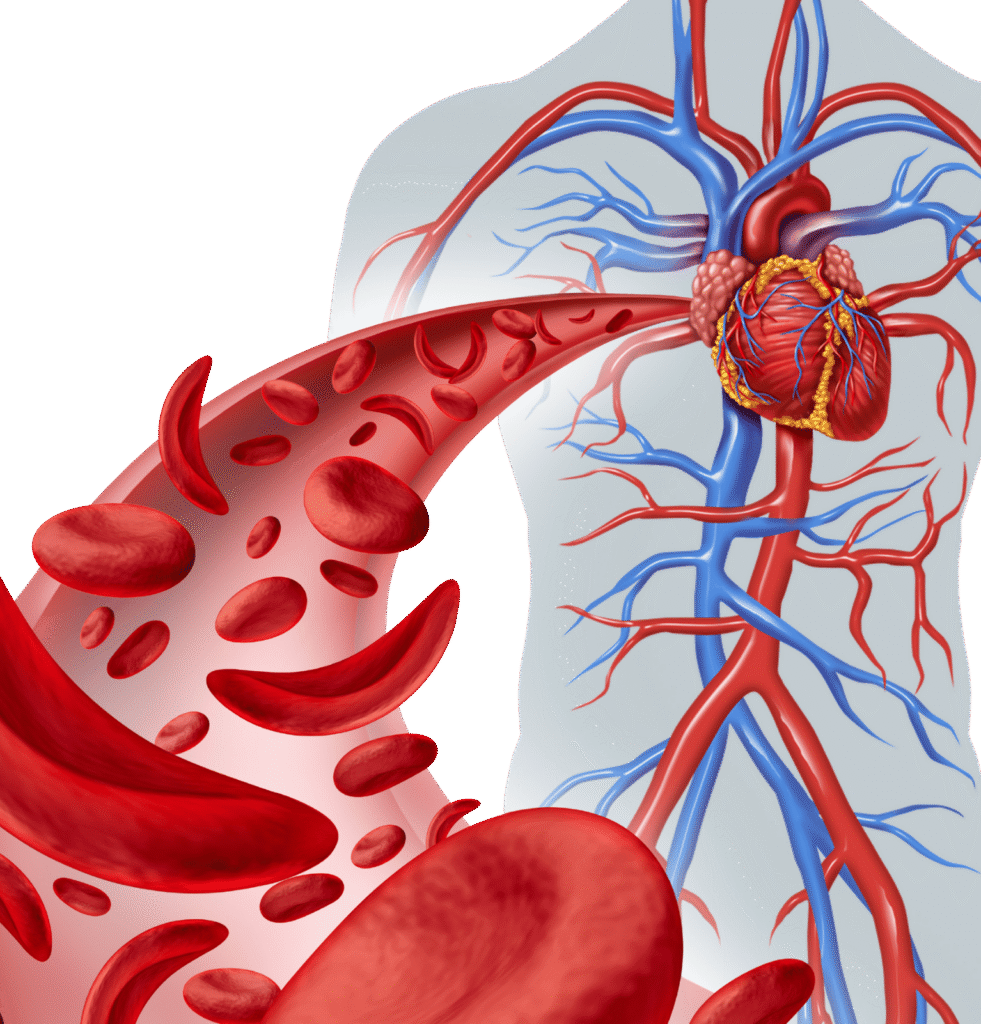Anemia
Anemia is a condition in which the blood lacks healthy red blood cells, or the red blood cells don't have enough hemoglobin. Hemoglobin is the main part of red blood cells and binds oxygen. If you have too few or abnormal red blood cells, or your hemoglobin is abnormal or low, the cells in your body won't get enough oxygen.
Iron-Deficiency Anemia
Anemia is broadly classified based on the cause and the morphology (size and color) of the red blood cells.
Cause
Most common type. Insufficient iron to produce hemoglobin.
Causes of Iron Deficiency
Chronic blood loss (e.g., heavy menstruation, GI bleeding), inadequate dietary iron intake, poor iron absorption (e.g., celiac disease, gastric surgery), increased iron demand (e.g., pregnancy, rapid growth in children).
Morphology
Microcytic (small red blood cells) and hypochromic (pale red blood cells).

Vitamin-Deficiency Anemia
Anemia is broadly classified based on the cause and the morphology (size and color) of the red blood cells.
Folate Deficiency Anemia
Anemia is broadly classified based on the cause and the morphology (size and color) of the red blood cells.
Cause
Lack of folic acid (Vitamin B9), essential for DNA synthesis and red blood cell maturation.
Causes of Folate Deficiency
Poor diet, malabsorption, increased demand (pregnancy), certain medications.
Morphology
Macrocytic (large red blood cells) and megaloblastic (abnormal red blood cell precursors in bone marrow).
Vitamin B12 Deficiency Anemia (Pernicious Anemia):
Anemia is broadly classified based on the cause and the morphology (size and color) of the red blood cells.
Cause
Lack of Vitamin B12 (cobalamin), also essential for DNA synthesis and nerve function. Pernicious anemia is a specific type caused by an autoimmune condition that prevents absorption of B12.
Causes of B12 Deficiency
Autoimmune (pernicious anemia), vegan diet, malabsorption (Crohn's disease, gastric surgery), certain medications.
Morphology
Macrocytic and megaloblastic. Can also cause neurological symptoms.
Anemia of Chronic Disease (Anemia of Inflammation
Cause
Associated with chronic inflammatory conditions (e.g., infections, autoimmune diseases like rheumatoid arthritis, cancer, kidney disease). The inflammation interferes with iron utilization and red blood cell production.
Morphology
Often normocytic (normal size) and normochromic (normal color), but can sometimes be microcytic.
Aplastic Anemia
Cause
Rare but serious condition where the bone marrow fails to produce enough new blood cells (red, white, and platelets). Can be acquired (e.g., due to toxins, drugs, viruses, autoimmune) or inherited.
Morphology
Normocytic and normochromic. Often associated with pancytopenia (low counts of all blood cell types).
Anemias Associated with Bone Marrow Diseases
Myelodysplastic Syndromes (MDS):
Group of disorders where the bone marrow produces abnormal, ineffective blood cells.
Leukemias
Cancers of the blood-forming tissues, which can crowd out normal blood cell production in the bone marrow.
Anemias Due to Increased Red Blood Cell Destruction

Sickle Cell Anemia:
Cause
Genetic defect leading to abnormal hemoglobin (hemoglobin S), causing red blood cells to become rigid, sickle-shaped, and prone to premature destruction.
Morphology
Normocytic, but with characteristic sickle cells on blood smear.
Thalassemias
Cause
Genetic disorders affecting the production of globin chains in hemoglobin, leading to reduced or absent hemoglobin synthesis.
Morphology
Microcytic and hypochromic.
G6PD Deficiency
Cause
Genetic enzyme deficiency (Glucose-6-phosphate dehydrogenase) that makes red blood cells vulnerable to oxidative stress (e.g., from certain foods, drugs, infections), leading to hemolysis.
Morphology
Varies, often normocytic.
Hereditary Spherocytosis/Elliptocytosis
Cause
Genetic defects in red blood cell membrane proteins, causing red blood cells to be abnormally shaped (spheres or ellipses) and easily destroyed in the spleen.
Morphology
Spherocytes or elliptocytes visible on blood smear.
Autoimmune Hemolytic Anemia (AIHA)
Cause
The immune system mistakenly produces antibodies that attack and destroy the body's own red blood cells. Can be warm antibody or cold antibody type.
Morphology
Varies, often normocytic. Positive Direct Antiglobulin Test (DAT/Coombs test).
Drug-Induced Hemolytic Anemia:
Cause
Certain medications can trigger an immune response that destroys red blood cells or directly damage them.
Mechanical Hemolytic Anemia
Cause
Physical damage to red blood cells (e.g., by artificial heart valves, microangiopathic hemolytic anemia like TTP/HUS).
Infection-Induced Hemolytic Anemia
Cause
Certain infections (e.g., malaria, Clostridium perfringens) can directly or indirectly cause red blood cell destruction.
Anemias due to Acute Blood Loss
Understanding the specific type of anemia is crucial for determining the underlying cause and guiding appropriate treatment.

Cause
Rapid loss of a large volume of blood (e.g., from trauma, surgery, severe gastrointestinal bleeding).
Morphology
Initially normocytic and normochromic, as the body hasn't had time to compensate. Reticulocyte count will increase as bone marrow tries to replenish.

